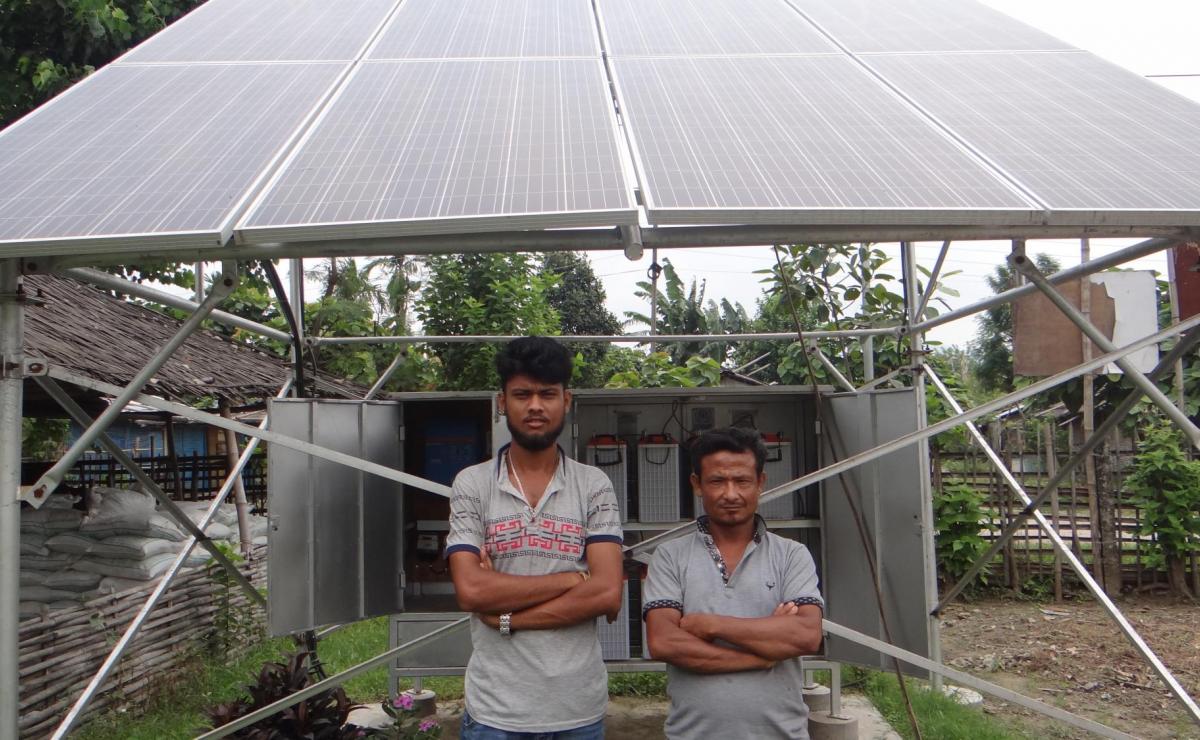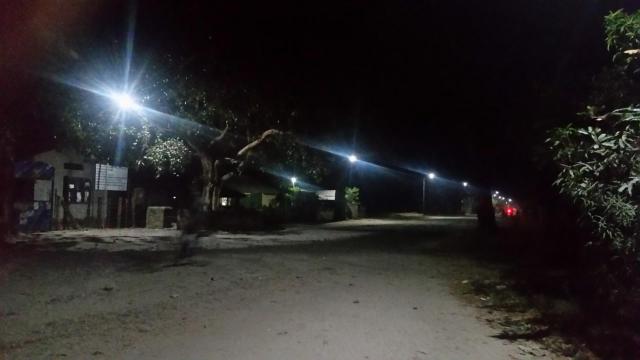Solar Light Brightens the Lives of Refugees and their Hosts

Kathmandu, 16 July 2018 - As the sun sets, 22-year-old Phadindra Ghimire, a resident in Damak Municipality, walks past a gravel road. He inspects the street lamps and sensors of a solar-grid along the roadside of Beldangi Refugee Camp and host community in Jhapa district.
“I visit the camp at least once a week to ensure that the solar lights function properly,” said Phadindra, who was appointed as one of the Energy Ambassadors in November 2016. He looks after the micro-grid solar-powered street light system.
He is one of 10 Energy Ambassadors (5 from the host community and 5 from among the refugees), responsible for the maintenance and sustainable management of the lighting system at the camp.
More than 267 solar street lamps have been installed along an 8 kilometer area, which includes both internal camp roads as well as host community peripheral roads surrounding the camp.
Through vocational and on-the-job training in solar photovoltaic during the installation process, the Energy Ambassadors are now equipped with the technical knowledge, skills and toolkits to sustainably maintain the system in the longer term.
“We work together with local Energy Ambassadors on a regular basis to coordinate and manage the functioning of the community lighting system,” said Bhim Bahadur Pradhan, 47, another Energy Ambassador from the refugee community.
“When there is a heavy rain and strong wind, we often come to inspect and ensure that the lights work properly,” said Bhim Bahadur. “We would not have been successful had there been no collaboration with the local people.”
He added that together they take the order inside the camp as well as at host community for the installation, repair and maintenance of solar home system. It fetches him Rs 500 per day.
Previously when there no street laps, the refugees and local people felt unsafe walking on the road for the fear of being robbed, and attacked by the wild elephants. Activities and movement were severely constrained as people rushed to their homes before the night fell to avoid possible robbery and ensuing violence.

Especially women and girls feared walking in the dark. Testimonies from the communities illustrate that the solar lights have contributed to facilitating the mobility of the refugees and local people and aiding them in the areas of health, education, livelihood, and sustainable energy practices.
According to the refugees, the incident of wild elephants entering the camp from the nearby forest and destroying their huts have gone down following the installation of the lamps.
“With the solar light installation, residents and refugees alike feel more secure. Sale of goods has gone up as the shops open for longer period in the evening because of the lighting system,” says Bhim Bahadur.
Sarawati Khanal, 55, who runs a grocery at Sanischare host community, echoes Bhim Bahadur.
“When there were no lights, the road used to be deserted as early as 6 pm,” said Sarawati. “Nowadays I keep open my shop until 8 pm and sometimes even 9 pm. It is good for my business as people keep on moving people,” she added.
Light has not only improved the living condition and safety, but also fostered social harmony between the refugee and host communities as a joint energy users group has been formed. The group collects tariff for maintenance and management. It has also helped keeping the surrounding clean.
“The light has been a huge relief for us,” said Prem Dhakal, Chairperson of Energy Users Group at Sanischare. Mr Purushottam Ghimire, Chief Executive Officer of Pathri-Sanischare Municipality also has similar opinion to Prem Dhakal. He said, “It is the property of the municipality and the municipality is ready to take the ownership of the street light.”
UNHCR has implemented the solar street light with financial support from the IKEA Foundation and technical support of LWF Nepal by mobilizing the energy users groups and Energy Ambassadors.
Text and image: LWF Nepal

